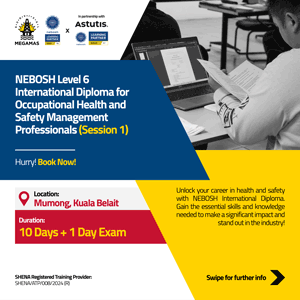(ANN/THE STRAITS TIMES) – A mixture of oil and water, known as “slop,” spilled into the sea between Singapore’s Bukom Island and Bukom Kecil on 20 October, with British petrochemical company Shell confirming that more than 30 tonnes had leaked from a land-based pipeline.
Singaporean authorities have since implemented precautionary measures to detect and contain any potential oil slick.
In a statement on 21 October, Shell said it is “actively working with all relevant authorities to manage the clean-up effort.”
The leak was brought under control by around 3pm on 20 October, with an estimated 30 to 40 tonnes of slop entering the sea before it was stopped.
“Our priority is to ensure the safety of people and to limit environmental impact as we work on resolving this as quickly as possible.
“We appreciate the support and cooperation from the authorities and our communities as we work diligently to minimise the impact,” said Shell, adding that more information will be released soon.

It added that it has deployed containment booms and anti-pollution craft, and was spraying dispersant to contain and break up the oil as part of the ongoing clean-up effort.
In a joint statement on October 21, eight government agencies said they were working closely with Shell to clean up the leaked oil.
The Maritime and Port Authority of Singapore (MPA) deployed a Current Buster system off Changi at the entrance to the East Johor Strait to collect oil slicks, if sighted, and prevent potential spread beyond port waters.
Another Current Buster system, which scoops seawater in affected areas and sieves out oil, was deployed to the west of Singapore.
The oil started leaking at around 5.30am on October 20 from a land-based pipeline belonging to Shell and “spilt into a holding area but some overflowed” into the water channel between Bukom Island and Bukom Kecil.
MPA was alerted to the incident more than seven hours later, at about 1pm. There were no other oil sightings as at 3pm on October 20, said the agencies.
The National Environment Agency earlier on October 21 advised the public to avoid swimming and other primary contact water activities near the beaches of East Coast Park, Kusu Island, St John’s Island and Lazarus Island.

This is despite no oil sightings at these islands, as well as Pulau Hantu and Seringat Island, according to the joint statement.
The Singapore Land Authority will continue to assess if oil-absorbent booms will be required at the lagoons of these islands.
Primary contact water activities are those where a person’s whole body or face and trunk are frequently immersed, or where it is likely that some water will be swallowed. These activities include swimming, wakeboarding and jet skiing.
The public may still continue with land-based and water activities at Tanjong Beach, Palawan Beach and Siloso Beach on Sentosa. Deflective booms will be progressively deployed across key areas of the island, including the three beaches.
The lock gates of Sentosa Cove have been closed, with oil-absorbent booms also deployed.
JTC Corporation has advised companies on Jurong Island and waterfront-facing companies in the western region to be on alert and to take precautionary measures.
There have been no reports of fish farms being affected by the leak, with the Singapore Food Agency in contact with farmers.
The authorities added that they have informed the Indonesian and Malaysian authorities of the incident and advised them to look out for any oil sightings along their respective coastlines.
Investigations into the incident are ongoing.






